Jaipur-Delhi
Jaipur-Delhi
Visit the yoga capital of the world-Rishikesh
Lush in the first town where ganga emerges-Haridwar
Visit the birth place of Lord krishna-Mathura
Visit the various attractions of jaipur-Hawa mahal
Visit Wagah, an army outpost on Indo-Pak border
- includes
- excludes
Things to do in and around jaipur
How to reach jaipur?
We've established convenient pickup and drop options right in your vicinity. Simply download the app, book your package using your location, and inform us of your exact whereabouts. Additionally, we've outlined various routes to reach the destination, taking into account commonly used traffic patterns.
Additional Information about Jaipur-Delhi
Jaipur-Delhi For enquiries
If you are looking to know more information about Jaipur-Delhi, our team at jaipur will assist you personally through the below dedicated number
Jaipur-Delhi address
Jaipur-Delhi,
jaipur,
jaipur
Whatsplan's Jaipur-Delhi contact number : +91 9842067265
Places covered in(17)
UNESCO World Heritage Sitemehrauli, delhi
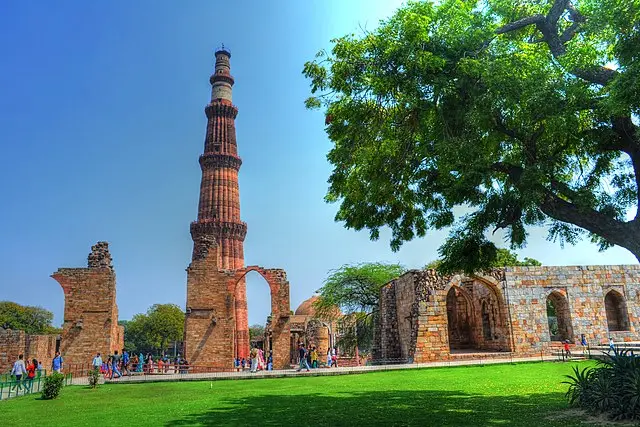
The Qutub Minar, a towering minaret, is the most iconic structure in Mehrauli and a prominent feature of the UNESCO World Heritage Site. Built by Qutb-ud-din Aibak in the early 13th century, the minaret stands at a height of 73 meters and is adorned with intricate carvings and verses from the Quran. It is a masterpiece of Indo-Islamic architecture. Adjacent to the Qutub Minar is the Quwwat-ul-Islam Mosque, one of the earliest mosques built in Delhi. The mosque incorporates materials from 27 Hindu and Jain temples, symbolizing the blend of Indo-Islamic architectural styles. Commissioned by Alauddin Khilji, the Alai Darwaza is an imposing gateway that stands near the Qutub Minar complex. It is known for its distinctive architectural features, including intricate carvings and a magnificent dome. Situated in the courtyard of the Quwwat-ul-Islam Mosque, the Iron Pillar of Delhi is a marvel of ancient metallurgy. It stands as a testament to the advanced technological skills of ancient Indian ironworkers. Despite being exposed to the elements for centuries, the iron pillar has not rusted. The tomb of Iltutmish, the second ruler of the Delhi Sultanate, is located within the Qutub Minar complex. It is an example of early Indo-Islamic funerary architecture and features a simple yet elegant design. Mehrauli is home to several other historical structures, including the Alai Minar (an unfinished tower), the Tomb of Balban, the Jamali Kamali Mosque and Tomb, and the Rajon Ki Baoli (a stepwell). Each of these monuments contributes to the UNESCO World Heritage Site's significance. The Mehrauli UNESCO World Heritage Site offers visitors a journey through centuries of history, showcasing the evolution of architecture and culture in the region. The complex is a popular destination for history enthusiasts, architects, and tourists seeking to explore Delhi's rich past.
Delhidelhi, national_capital_territory_of_delhi_
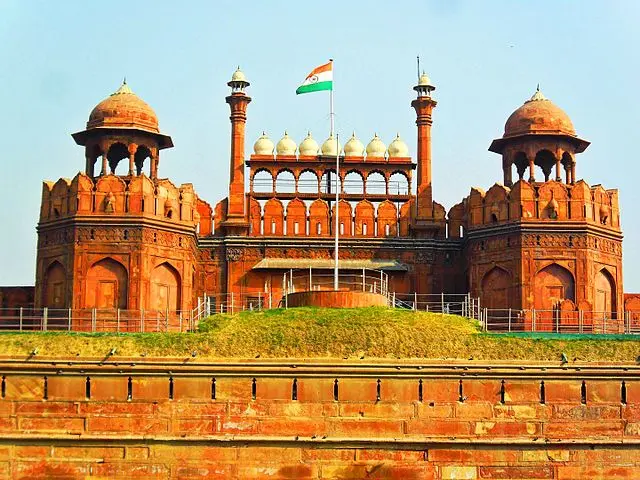
Delhi, is a city and a union territory of India containing New Delhi, the capital of India. It is bordered by Haryana (Gurugram, Faridabad, Jhajjar and Sonipat) on three sides and by Uttar Pradesh (Gautam Budh Nagar, Ghaziabad and Baghpat) to the east. The NCT covers an area of 1,484 square kilometres (573 sq mi). According to the 2011 census, Delhi's city proper population was over 11 million, the second-highest in India after Mumbai, while the whole NCT's population was about 16.8 million. Delhi's urban area is now considered to extend beyond the NCT boundaries, and include the neighbouring satellite cities of Ghaziabad, Noida, Greater Noida, Faridabad, Gurgaon, Bahadurgarh and Sonipat in an area now called Central National Capital Region (CNCR) and had an estimated 2016 population of over 26 million people, making it the world's second-largest urban area according to the United Nations. Delhi is the second-wealthiest city in India after Mumbai and is home to 18 billionaires and 23,000 millionaires. Delhi ranks fifth among the Indian states and union territories in human development index.Delhi has the second-highest GDP per capita in India.Furthermore, it is considered one of the world's most polluted city by particulate matter concentration.
Agra Fortagra, uttarpradesh
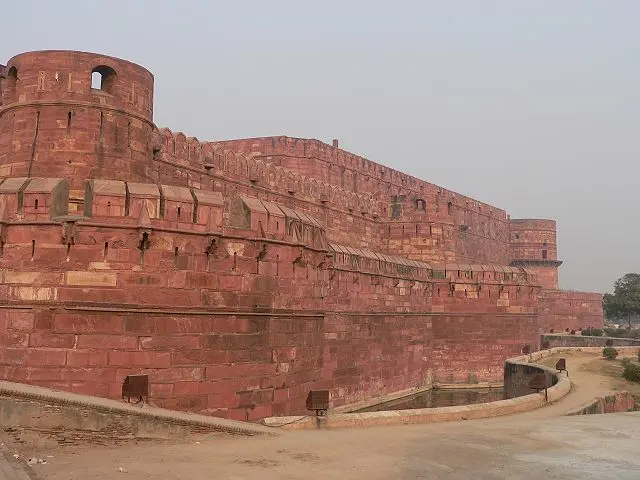
Agra Fort is situated in the city of Agra, on the banks of the Yamuna River. It is located near the iconic Taj Mahal. Agra Fort has immense historical significance and has been witness to various important events in Indian history. It served as the main residence of the emperors of the Mughal Dynasty until 1638 when the capital was shifted to Delhi. The fort reflects a mix of architectural styles, including Islamic, Persian, and Hindu elements. It is predominantly built with red sandstone. The construction of Agra Fort began in 1565 during the reign of Emperor Akbar and continued under subsequent Mughal emperors, including Shah Jahan. Agra Fort is a massive structure with walls that stretch for over two kilometers. It consists of various buildings and structures within its complex, including palaces, mosques, and audience halls. The palace was built by Emperor Akbar and later renovated by his son, Jahangir. It is known for its architectural beauty. The fort is famously associated with the imprisonment of Emperor Shah Jahan by his son Aurangzeb. Shah Jahan spent his last years looking at the Taj Mahal from a window in Agra Fort. Agra Fort offers stunning views of the Taj Mahal, and the fort itself is visible from the Taj Mahal. Agra Fort is open to tourists, and visitors can explore its various structures, halls, and gardens. The fort attracts millions of tourists each year. This is where the emperor would address the general public and hear their grievances.This was the private chamber for the emperor, where important discussions and meetings took place. A beautiful palace with intricate mirror work. A white marble mosque within the fort complex.
Lotus Templedelhi, delhi
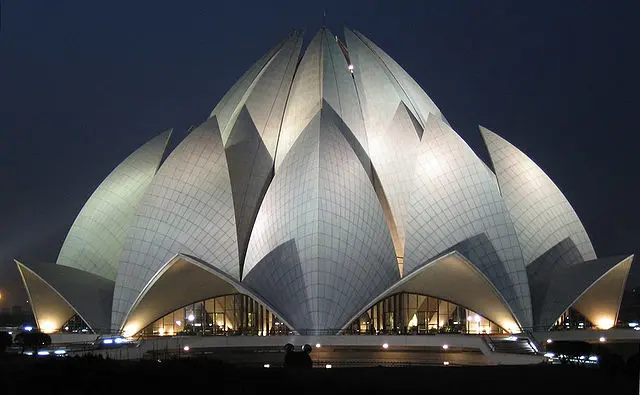
The Lotus Temple is situated in the southern part of Delhi, in the neighborhood of Kalkaji. It is positioned near the Nehru Place business district and is easily accessible from various parts of the city. Designed by Iranian architect Fariborz Sahba, the Lotus Temple is renowned for its distinctive lotus flower-inspired architecture. The structure is composed of 27 free-standing marble-clad "petals" arranged in clusters of three to form the shape of a lotus blossom. These white marble petals are surrounded by nine pools of water, giving the illusion that the lotus is floating, and creating a visually stunning effect. The temple is an exquisite example of modern Indian architectural design. The Lotus Temple is the foremost Bahá'í House of Worship in the Indian subcontinent. It is open to people of all faiths, welcoming visitors from around the world to meditate, pray, or simply enjoy the serene surroundings. The Bahá'í Faith emphasizes the oneness of God, the unity of all religions, and the unity of humanity. The central hall of the Lotus Temple is a large, open space devoid of religious symbols or images. It is meant to be a place for silent meditation and prayer. The temple does not have any idols, altars, or clergy. Visitors are encouraged to reflect on their spiritual thoughts in a tranquil atmosphere.Surrounding the Lotus Temple are well-maintained gardens that enhance the overall beauty of the site. The landscaping is designed to complement the lotus theme, creating a peaceful and contemplative environment for visitors. The temple is often illuminated in the evenings, presenting a breathtaking sight against the darkening sky. In addition to its role as a House of Worship, the Lotus Temple serves as a center for community service, education, and social development. It hosts various events, discussions, and activities aimed at promoting unity and understanding among people of different backgrounds. The Lotus Temple is a popular tourist attraction and has won numerous architectural awards. Visitors are not only captivated by its unique design but also by the spiritual and serene atmosphere it offers. It stands as a symbol of India's religious diversity and the inclusivity that is a core principle of the Bahá'í Faith.
Nahargarh Fortjaipur, rajasthan
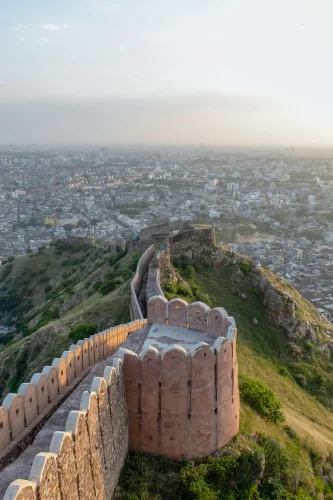
Nahargarh Fort, built in 1734 by Maharaja Sawai Jai Singh II, was initially constructed as a retreat and defense fortification on the Aravalli Hills. The fort, along with Jaigarh Fort and Amer Fort, formed a strong defense ring for the city of Jaipur. The architecture of Nahargarh Fort reflects the grandeur and finesse of Rajputana architecture. The fort is a blend of Indian and European architectural styles, featuring ornate decorations, frescoes, and intricate carvings that showcase the artistic prowess of the craftsmen of that era. Perched on the rugged hills of the Aravallis, Nahargarh Fort offers breathtaking panoramic views of Jaipur city and the surrounding landscape. Its strategic location made it a formidable defense structure, providing a vantage point to monitor the landscape for potential threats. The fort gets its name from Nahar Singh Bhomia, a Rathore prince whose spirit was believed to haunt the area during the construction of the fort. To appease his spirit, it was named Nahargarh, which translates to "abode of tigers." Along with Amer Fort and Jaigarh Fort, Nahargarh Fort formed a strong defense network for Jaipur against external invasions. The interconnected walls and structures of these forts provided a formidable defense line for the rulers of Jaipur. Nahargarh Fort consists of various palatial structures, including Madhavendra Bhawan, which was built by Sawai Madho Singh II as a retreat for himself and his queens. Madhavendra Bhawan is a series of interconnected suites for the king and his queens, showcasing the architectural and aesthetic taste of the royal family. The fort also features step wells and water reservoirs that were crucial for ensuring a water supply to the inhabitants during times of siege. These wells were ingeniously designed to harvest rainwater and store it for future use. Nahargarh Fort is adorned with beautiful frescoes and murals that depict various themes, including royal processions, hunting scenes, and religious motifs. The artistic heritage within the fort provides a glimpse into the cultural and artistic richness of the bygone era. One of the popular attractions at Nahargarh Fort is the sunset point. Visitors often climb to the higher vantage points within the fort to witness a mesmerizing sunset over the city of Jaipur, creating a magical and romantic atmosphere. Nahargarh Fort is a major tourist attraction in Jaipur, drawing history enthusiasts, architecture lovers, and those seeking panoramic views of the city. The fort's historical significance and architectural splendor make it a must-visit destination in the Pink City. The scenic backdrop of Nahargarh Fort has also made it a popular location for film shoots. Several Bollywood movies have featured the fort as a backdrop, adding to its allure.
Rishikeshdehradun, uttarakhand

Rishikesh is a vibrant and spiritual town nestled in the foothills of the Himalayas in the northern Indian state of Uttarakhand. Situated on the banks of the sacred Ganges River, Rishikesh is renowned for its spiritual significance, yoga and meditation centers, scenic beauty, and adventure sports. Rishikesh is often referred to as the "Yoga Capital of the World" and is a significant pilgrimage destination for Hindus. It is believed that meditation at this sacred place leads to salvation (moksha). The town is located on the banks of the Ganges, and the river is considered holy by Hindus. Many ghats (steps leading to the river) line the banks, and pilgrims take ritual baths to cleanse themselves spiritually. The town attracts yoga enthusiasts and spiritual seekers from around the world. Numerous ashrams and yoga centers offer courses and retreats, providing a serene environment for self-discovery and well-being. Rishikesh is a hub for adventure sports like white-water rafting, trekking, camping, and bungee jumping. The surrounding hills and the Ganges River provide a picturesque backdrop for these activities. Rishikesh has a lively atmosphere with numerous cafes, restaurants, and shops lining the streets. The local markets offer a variety of handicrafts, spiritual items, and clothing. Rishikesh, with its combination of spirituality, adventure, and natural beauty, attracts a diverse range of visitors, from seekers of inner peace to adventure enthusiasts. The tranquil atmosphere, coupled with the sound of the flowing Ganges and the backdrop of the Himalayas, makes Rishikesh a unique and special destination.
City Palacejaipur, rajasthan

The City Palace in Jaipur, Rajasthan, India, is a magnificent complex that reflects the grandeur and rich history of the region. The City Palace is a historic palace complex located in the heart of Jaipur, the capital city of Rajasthan. It was built by Maharaja Sawai Jai Singh II, the founder of Jaipur, in the early 18th century. The architecture of the City Palace is a splendid blend of Rajput, Mughal, and European styles. The palace complex is a series of courtyards, gardens, and buildings that showcase the opulence of the royal family. The City Palace is divided into a series of courtyards, each with its own unique features. Some of the prominent courtyards include Mubarak Mahal, Chandra Mahal, Pritam Niwas Chowk, and the Maharani's Palace. Mubarak Mahal, meaning the "Auspicious Palace," is a museum within the City Palace complex. It houses a remarkable collection of royal costumes, textiles, and artifacts. Chandra Mahal is the main residence of the current Maharaja of Jaipur. It is a seven-storied structure with each floor having a distinct name and purpose. The top floor, Mukut Mahal, offers panoramic views of the city. This courtyard is known for its four beautifully decorated doorways, each representing a different season. The doors lead to different sections of the City Palace. The Peacock Gate is one of the ornate entrances in the City Palace. It is named after the intricate peacock designs that adorn the gate. Diwan-I-Khas, or the Hall of Private Audience, is a stunning chamber adorned with mirrors, colored glass, and intricate paintings. It was used by the Maharaja for private meetings. Diwan-I-Aam, or the Hall of Public Audience, is an open hall with a double row of columns. It was used by the Maharaja to address the general public and hear their grievances. The City Palace is adorned with exquisite artwork, including intricate carvings, paintings, and frescoes. The walls and ceilings are beautifully decorated with mirrors, tiles, and detailed craftsmanship. Apart from Mubarak Mahal, the City Palace complex houses other museums and exhibitions that display a vast collection of royal artifacts, weapons, manuscripts, and more.The City Palace is still used for various royal events and ceremonies, adding a living dimension to its historical significance. While not part of the City Palace complex, the nearby Jantar Mantar, an astronomical observatory built by Maharaja Sawai Jai Singh II, is often visited in conjunction with the City Palace. The City Palace in Jaipur stands as a testament to the grandeur of Rajput architecture and the cultural heritage of Rajasthan. It continues to attract tourists, history enthusiasts, and those interested in experiencing the royal legacy of Jaipur.
Johari bazarjaipur, rajasthan
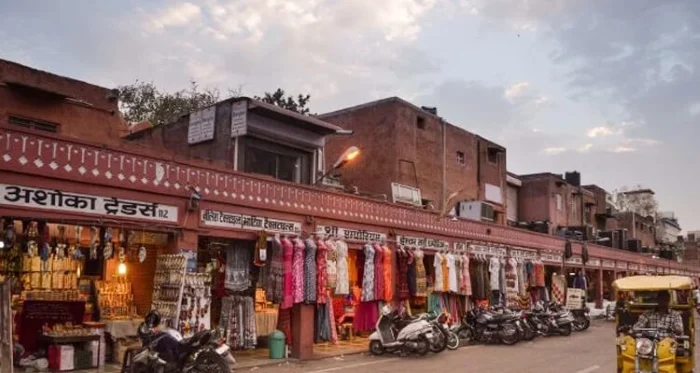
Johari Bazar holds historical significance and is an integral part of Jaipur's heritage. The market dates back to the city's foundation in the 18th century and has been a bustling center for trade and commerce since its inception. The architecture of Johari Bazar is a reflection of traditional Rajasthani design. The narrow lanes, vibrant colors, and intricately designed facades of the shops contribute to the market's charm. Many of the buildings feature distinct architectural elements that showcase the city's cultural identity. The market is renowned for its exquisite jewelry shops, making it a haven for those interested in traditional Rajasthani jewelry. Visitors can explore a wide variety of gold, silver, and gemstone jewelry, including intricately designed necklaces, earrings, bangles, and other ornate pieces. Johari Bazar is particularly famous for its gemstone market, where you can find a stunning array of precious and semi-precious stones. Skilled artisans and jewelers offer custom-made pieces, and the market is known for its craftsmanship and attention to detail. The market is a paradise for textile enthusiasts, offering a diverse range of fabrics, including vibrant Rajasthani prints, traditional block prints, and embroidered textiles. Visitors can purchase sarees, suits, and scarves adorned with intricate designs and patterns. Johari Bazar is an excellent place to shop for traditional Rajasthani attire. Shops showcase a variety of lehengas, turbans, bandhani dupattas, and other traditional garments. The market provides an opportunity to experience the richness of Rajasthani clothing and accessories. The market is home to numerous handicraft shops where artisans display their skills in crafting traditional Rajasthani items. Visitors can find a wide range of handicrafts, including wooden carvings, pottery, puppets, and other art pieces. Johari Bazar is not only about shopping but also about experiencing the local flavors. The market features spice shops where visitors can purchase aromatic Rajasthani spices. Additionally, there are local eateries and vendors offering traditional Rajasthani snacks and sweets. The lively atmosphere of Johari Bazar often includes street performers, musicians, and artists showcasing the rich cultural heritage of Rajasthan. Visitors may encounter impromptu performances, adding an extra layer of entertainment to the shopping experience. Johari Bazar is a must-visit destination for tourists exploring Jaipur. Its cultural richness, traditional offerings, and vibrant atmosphere make it a quintessential part of the Jaipur experience. During festivals and special occasions, Johari Bazar comes alive with even more vibrancy. The market is beautifully decorated, and special events or cultural celebrations may take place, providing a unique and festive shopping experience.
Amristar golden templeamristar, punjab
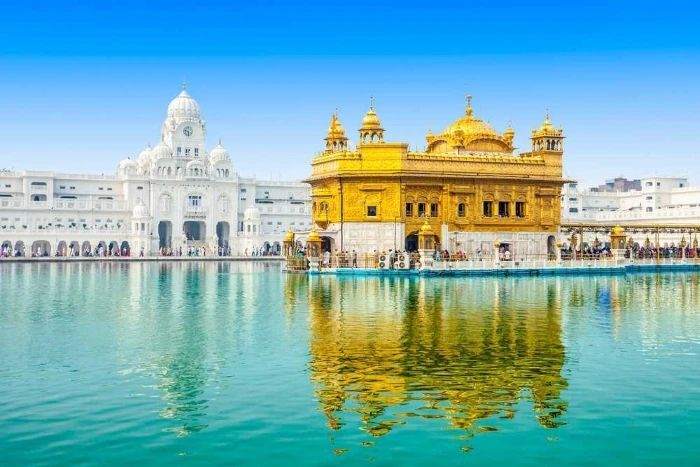
The Golden Temple, also known as Sri Harmandir Sahib, is a prominent Sikh gurdwara located in the city of Amritsar in the state of Punjab, India. It is the holiest shrine in Sikhism and is a symbol of the Sikh faith's resilience and spirituality. The Golden Temple is renowned for its stunning architectural beauty. The main structure is built of white marble adorned with intricate inlay work, while the upper floors are covered with gold leafing, giving the temple its distinctive golden appearance. The temple is surrounded by a sacred pool known as Amrit Sarovar. Pilgrims believe that taking a dip in this holy pool can cleanse the soul. The Akal Takht, meaning the "Throne of the Timeless One," is one of the five takhts (thrones) in Sikhism. It is a seat of authority and is traditionally associated with political and religious decisions affecting the Sikh community.The central religious scripture of Sikhism, the Guru Granth Sahib, is kept inside the sanctum sanctorum of the Golden Temple during the day and is ceremoniously returned to the Akal Takht at night. The Golden Temple is famous for its langar, a community kitchen that serves free meals to all visitors, regardless of their caste, creed, or religion. This practice embodies the Sikh principles of equality and selfless service. Inside the Golden Temple complex, there is a gallery depicting the lives and teachings of the Sikh Gurus through paintings and exhibits. The Golden Temple is a focal point for Sikh celebrations, especially during major festivals such as Gurpurabs (birth anniversaries of Sikh Gurus), Diwali, and Baisakhi. The temple is illuminated with lights and decorations during these occasions. The Golden Temple is not only a religious site but also a symbol of the Sikh community's resilience and commitment to equality, service, and spiritual values. It attracts millions of visitors and pilgrims from around the world each year.
Sri Krishna Balaram Mandirvrindavan, uttarpradesh
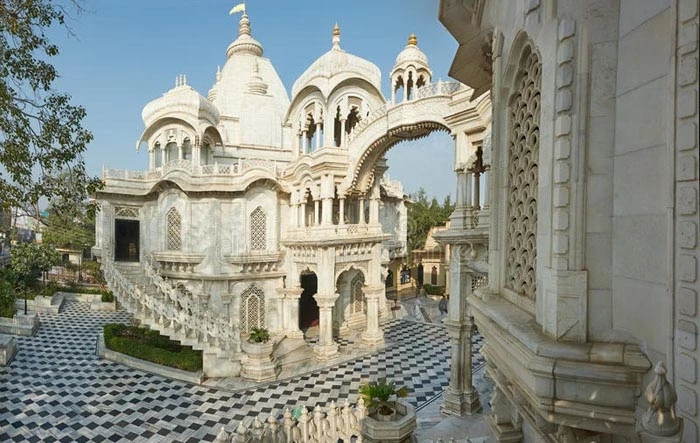
Vrindavan is a sacred town in the Mathura district of the northern Indian state of Uttar Pradesh. It is one of the most important pilgrimage sites for devotees of Lord Krishna. The town is closely associated with the childhood and early life of Lord Krishna, according to Hindu mythology."Sri Krishna Balram Mandir" in Vrindavan is a famous temple known as the "Prem Mandir," which is dedicated to Lord Krishna and Radha. The Prem Mandir, inaugurated in 2012, is a large marble temple that showcases the eternal love between Radha and Krishna. It is situated on the outskirts of Vrindavan and is known for its intricate architecture and beautiful carvings. In addition to the Prem Mandir, there are several other temples in Vrindavan dedicated to Lord Krishna, each with its own unique significance. Some of the well-known temples in Vrindavan include the Banke Bihari Temple, ISKCON Temple (Krishna-Balaram Mandir), Radha Raman Temple, and Shahji Temple.The temple complex includes a Goshala, or a cow shelter, reflecting the importance of cows in Vedic culture. Devotees engage in cow protection and care as part of their spiritual practices. Inaugurated in 2012, Prem Mandir is a large temple made of white marble. It is dedicated to Radha Krishna and showcases the divine love between them through intricate carvings and light displays. The temple serves as a hub for various spiritual and cultural activities. Regular worship services, kirtans (devotional singing), lectures, and festivals are conducted, drawing devotees and visitors interested in spiritual practices and the teachings of Lord Krishna.
Red Fortdelhi, delhi
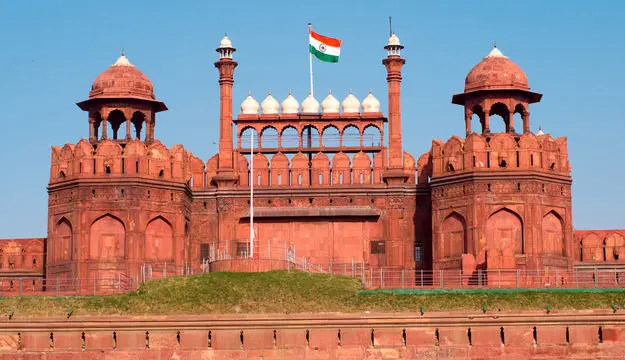
The Red Fort, also known as Lal Qila, is an iconic historical monument located in the heart of Old Delhi, India. This majestic fort, a UNESCO World Heritage Site, has played a significant role in Indian history and stands as a symbol of the country's rich cultural and architectural heritage. Built by the Mughal Emperor Shah Jahan, the Red Fort was completed in 1648 and served as the main residence of the Mughal emperors for nearly 200 years. It became the center of political and cultural activities during the Mughal rule in India. The Red Fort is renowned for its grand Mughal architecture, characterized by red sandstone walls that give the fort its distinctive appearance. The fort complex is an excellent example of Indo-Islamic, Persian, and Timurid architectural styles. The main entrance to the Red Fort is through the Lahori Gate, which faces the bustling market area of Chandni Chowk. The gate is named after the city of Lahore in present-day Pakistan. The fort houses several significant structures, including the Diwan-i-Aam, where the emperor would address the general public and hear their grievances. The hall is characterized by a raised platform with a throne for the emperor. The Diwan-i-Khas was the hall where the emperor would hold private meetings with select courtiers and dignitaries. The hall is adorned with intricate marble work and a stunning ornamental ceiling. The Rang Mahal, also known as the Palace of Colors, was the residence of the empress and her attendants. The interiors were once adorned with vibrant colors and intricate decorations. Named after Shah Jahan's beloved wife, Mumtaz Mahal was a palace within the fort where the emperor's daughters lived. The Moti Masjid, located within the fort complex, is a beautiful mosque made of white marble. It was built by Aurangzeb for his personal use. The Red Fort hosts an impressive sound and light show in the evenings, narrating the history of the fort and bringing its grandeur to life. The Red Fort is particularly famous for being the venue of the annual Independence Day celebrations in India. The Prime Minister of India hoists the national flag and addresses the nation from the ramparts of the Red Fort on August 15th. In 2007, the Red Fort was designated as a UNESCO World Heritage Site, recognizing its cultural and historical significance.
Amer Fortamer, rajasthan
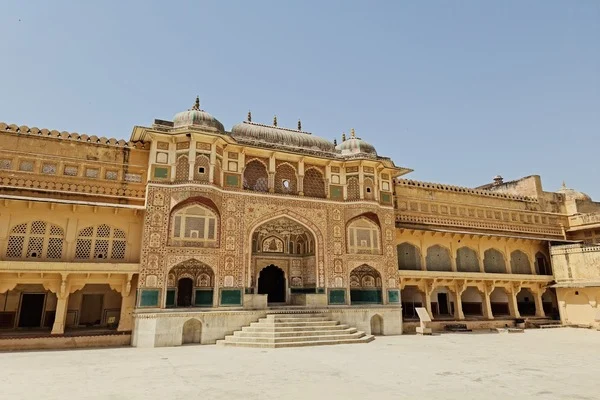
Amer Fort, also known as Amber Fort, is a majestic fort located in Amer, a town near Jaipur in the state of Rajasthan, India. Amer Fort is one of the most well-known and historically significant forts in Rajasthan. It was built by Raja Man Singh I in the late 16th century and later expanded by Raja Jai Singh .Situated atop a hill, Amer Fort offers panoramic views of the surrounding hills and the Maota Lake. Its strategic location was chosen for defensive purposes. The fort showcases a blend of Rajput and Mughal architectural styles, reflecting the cultural and artistic fusion prevalent during the reign of the Rajput kings. Amer Fort is not just a single structure but a complex of several palaces, halls, courtyards, and gardens. Each section of the fort has its own unique features and historical significance. The Ganesh Pol, or Ganesh Gate, is a prominent entrance to Amer Fort. It is a beautifully decorated gateway adorned with frescoes and intricate carvings. It is named after the Hindu deity Lord Ganesh. The Diwan-e-Aam, or Hall of Public Audience, is a large hall where the king addressed the common people. The hall is known for its ornate pillars and balconies.The Sheesh Mahal, or Mirror Palace, is a dazzling hall adorned with thousands of tiny mirrors. The mirrors are strategically placed to reflect even the smallest ray of light, creating a sparkling effect. Sukh Niwas, also known as the Hall of Pleasure, features a unique cooling system. The walls have channels through which water flowed, providing a cooling effect through the breeze. The Diwan-e-Khas, or Hall of Private Audience, is an intricately designed chamber where the king held private meetings and discussions. The Kesar Kyari Bagh is a beautiful garden with saffron beds. It is a well-planned Mughal-style garden within the fort complex. The Jaleb Chowk is the main courtyard where victory parades and gatherings took place. It leads to the main entrance of the fort. The Suraj Pol, or Sun Gate, is another impressive gate of Amer Fort. It leads to the main courtyard and is adorned with frescoes and intricate architecture. In the evening, Amer Fort hosts a sound and light show that narrates the history of the fort. The show, with the illuminated fort as a backdrop, is a popular attraction. Visitors often have the option to ascend to the fort on an elephant, which adds to the regal experience and recreates the historical charm of the era. Amer Fort stands as a magnificent testament to the architectural brilliance and cultural richness of Rajasthan. Its stunning palaces, intricate artwork, and strategic location make it a must-visit destination for history enthusiasts and tourists exploring the vibrant heritage of Jaipur.
Pink cityjaipur, rajasthan
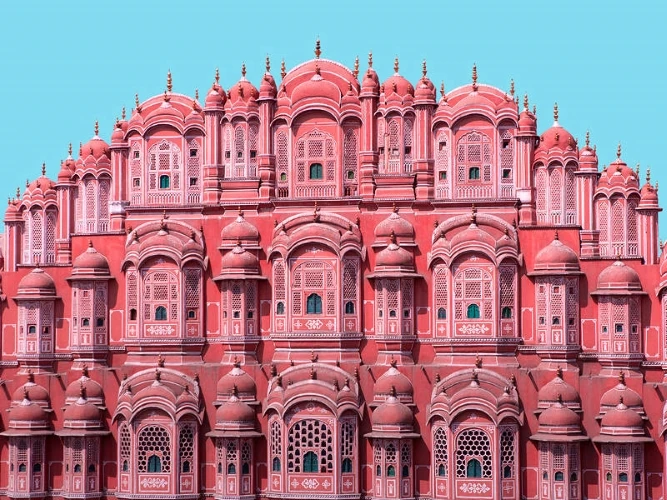
The term "Pink City" primarily refers to Jaipur, the capital city of the Indian state of Rajasthan. Jaipur is famously known as the Pink City due to the distinctive color of many of its buildings. The Pink City earned its name due to the widespread use of pink-colored sandstone in the construction of buildings during the reign of Maharaja Sawai Ram Singh II. This distinctive architectural style was adopted to mimic the red sandstone architecture of Mughal cities. Jaipur was founded in 1727 by Maharaja Sawai Jai Singh II, and it is one of the earliest planned cities in India. The city was designed following the principles of Vastu Shastra and Shilpa Shastra, ancient Indian architectural treatises. One of the most iconic landmarks of Jaipur, the Hawa Mahal, is a stunning palace with a unique facade featuring 953 small windows, known as jharokhas. The palace was built to allow royal ladies to observe street festivities without being seen. The City Palace is a majestic complex that blends Rajasthani and Mughal architectural styles. It houses several palaces, courtyards, gardens, and a museum, showcasing artifacts and royal collections. A UNESCO World Heritage Site, Jantar Mantar in Jaipur is an astronomical observatory built by Maharaja Jai Singh II. It features a collection of architectural astronomical instruments. Located a short distance from Jaipur, Amer Fort is a magnificent hilltop fort known for its grand architecture, stunning palaces, and panoramic views of the surrounding landscape. Jaipur is known for vibrant and bustling marketplaces. Johari Bazaar is famous for jewelry, Bapu Bazaar for textiles, and Tripolia Bazaar for handicrafts. The markets offer a variety of traditional Rajasthani items like textiles, jewelry, handicrafts, and more. The Pink City is a hub of Rajasthani culture, showcasing traditional art, dance, and music. Visitors can experience folk performances, puppet shows, and Rajasthani cuisine. Jaipur hosts several festivals, and the city becomes particularly vibrant during events like Diwali, Holi, and the Jaipur Literature Festival. The festivals add to the cultural richness and liveliness of the Pink City. While rooted in history and tradition, Jaipur has embraced modern amenities and infrastructure. Visitors can enjoy a blend of historical charm and contemporary conveniences. In addition to the City Palace, Jaipur has other royal residences like Jal Mahal, Nahargarh Fort, and Jaigarh Fort, each contributing to the city's regal ambiance. The Pink City of Jaipur is a captivating destination that seamlessly blends history, architecture, and culture.
Coimbatore international airportcoimbatore, tamilnadu

Coimbatore International Airport, also known as Peelamedu Airport, is a major aviation facility serving the city of Coimbatore in Tamil Nadu, India. As of my last knowledge update in January 2022, the information provided here may not reflect the latest developments, so it's recommended to check with official sources for the most current details. Coimbatore International Airport is likely to have separate terminals for domestic and international flights. These terminals house facilities such as check-in counters, baggage claim areas, security checks, and customs and immigration facilities. The airport features well-maintained runways and taxiways to accommodate a variety of aircraft sizes, including international flights. An air traffic control tower is in place to manage the safe takeoff, landing, and movement of aircraft within the airport's airspace. For international flights, the airport provides customs and immigration facilities to process passengers arriving from or departing to other countries. Stringent security measures are in place, including checks for both passengers and luggage, to ensure the safety and security of air travel. Coimbatore International Airport hosts both domestic and international airlines, connecting the city with major destinations within India and across the globe. The airport likely features lounges and waiting areas for passengers to relax before their flights. These areas may offer amenities such as Wi-Fi, comfortable seating, and refreshments. Various shopping outlets offering duty-free goods, as well as a range of dining options including restaurants and cafes, are typically available within the airport. Ground transportation options, such as taxis, rental cars, and possibly shuttle services, are available for passengers arriving at or departing from the airport. Coimbatore International Airport provides parking facilities for both short-term and long-term parking to accommodate the vehicles of passengers and visitors. In addition to passenger services, the airport likely has cargo facilities to handle the transportation of goods and freight.
Hawa Mahaljaipur, rajasthan
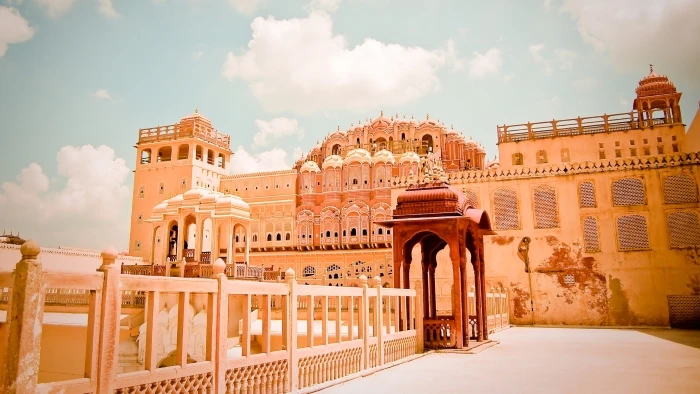
Hawa Mahal, also known as the Palace of Winds, is one of the most iconic landmarks in Jaipur, Rajasthan, India. Built in 1799 by Maharaja Sawai Pratap Singh, Hawa Mahal is a unique architectural marvel that stands as a testament to the creativity of the Rajput architecture. Situated in the heart of the Pink City, Hawa Mahal is located near the City Palace and Jantar Mantar, two other major attractions in Jaipur. The most striking feature of Hawa Mahal is its distinctive five-story pink sandstone facade with intricately carved jharokhas (small windows) and lattice work. The facade resembles a honeycomb and is adorned with over 900 windows. The primary purpose of Hawa Mahal was to allow royal women to observe street festivities and daily life without being seen. The small windows, known as jharokhas, provided ventilation and maintained privacy. The unique design of the Hawa Mahal allows a continuous flow of air through the windows, creating a natural cooling effect. This feature was especially important in the hot desert climate of Rajasthan. The jharokhas are not only functional but also intricately designed with intricate patterns and motifs. They are arranged in a way that allows the breeze to circulate through the palace.Hawa Mahal is often referred to as the "Crown of the City" due to its high elevation and the crown-like appearance of its top. While the exterior of Hawa Mahal is its most distinctive feature, the interior is relatively simple. The palace does not have a grand courtyard or extensive rooms, as its purpose was more for observation than residence. Hawa Mahal is a favorite subject for photographers, especially during sunrise and sunset when the soft light enhances the beauty of its pink facade. The Hawa Mahal is beautifully illuminated at night, making it a captivating sight when viewed after sunset. The pink glow against the dark sky adds to the magical ambiance of the structure. Hawa Mahal is connected to the City Palace through a small door. There is also an extension at the rear called the Hawa Mahal Museum, which displays artifacts related to the history of Jaipur. Hawa Mahal is easily accessible and is a must-visit for tourists exploring Jaipur. It provides a glimpse into the rich cultural and architectural heritage of the region. Hawa Mahal remains a symbol of Jaipur's architectural splendor and royal legacy. Its unique design, historical significance, and aesthetic appeal.
Shri Krishna Janmasthanmathura, uttarpradesh
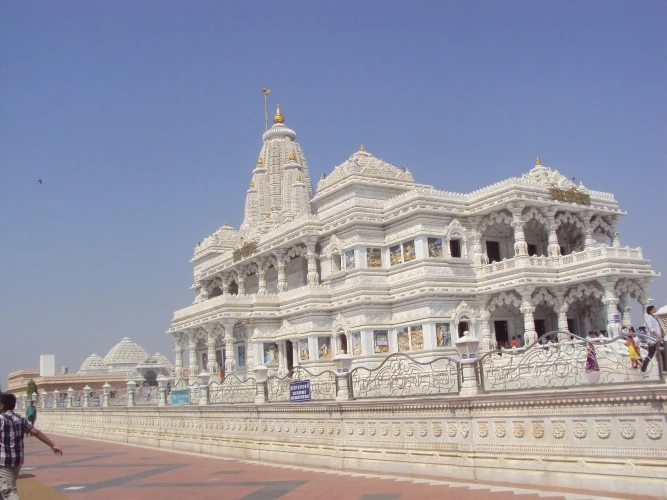
Shri Krishna Janmasthan, also known as Krishna Janmabhoomi, is a significant religious site in Mathura, Uttar Pradesh, India. It is believed to be the birthplace of Lord Krishna, one of the most revered deities in Hinduism. The site encompasses various temples and structures associated with the life and legends of Lord Krishna. Nestled along the banks of the Yamuna River, Shri Krishna Janmasthan in Mathura is a sacred pilgrimage site that resonates with the divine aura of Lord Krishna's birth. According to Hindu mythology, Mathura is the hallowed ground where Lord Krishna, the eighth avatar of Lord Vishnu, made his earthly appearance to combat evil and establish righteousness. At the heart of Shri Krishna Janmasthan is the Krishna Janmabhoomi Temple, believed to be the exact spot where Lord Krishna was born. The temple complex underwent various reconstructions over the centuries, and the present structure reflects a blend of architectural styles. Pilgrims and devotees flock to the temple to offer prayers and witness the place believed to be the divine birth site. The broader Janmasthan complex encompasses several other important structures associated with the life of Lord Krishna. These include the Kesava Deo Temple, which houses a deity of Lord Krishna in his infant form, and the Potara Kund, a small pond believed to be the spot where Lord Krishna's mother, Devaki, used to bathe. Adjacent to the Janmasthan complex is the Vishram Ghat, a revered bathing ghat on the Yamuna River. It is believed that Lord Krishna rested here after slaying the demon Kansa. Pilgrims often take a ritualistic dip in the holy waters of the Yamuna at Vishram Ghat, considering it purifying and spiritually significant. Shri Krishna Janmasthan holds immense cultural and historical significance in Hinduism. The stories of Lord Krishna's childhood, his divine exploits, and his teachings in the Bhagavad Gita are deeply embedded in the cultural fabric of India. The site attracts not only pilgrims but also scholars, artists, and devotees who seek to immerse themselves in the timeless tales of Lord Krishna. Mathura and Shri Krishna Janmasthan come alive during festivals such as Janmashtami, the celebration of Lord Krishna's birth. The entire city is adorned with lights, decorations, and processions, creating a joyous and festive atmosphere. Devotees gather to participate in prayers, cultural events, and rituals during these festive occasions. The architecture of the Krishna Janmabhoomi Temple reflects a combination of historical styles, with intricate carvings, domes, and spires adorning the structure. The temple's sanctum sanctorum, where the deity of Lord Krishna is enshrined, is the focal point of devotion and reverence.
Wagah Borderhardorattan, punjab
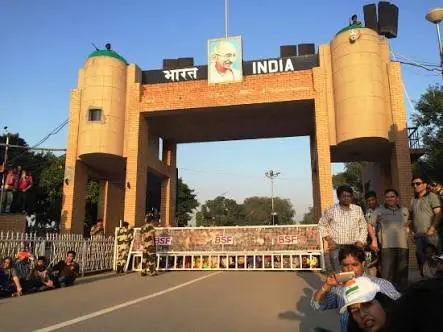
The Wagah Border, situated between India and Pakistan near the town of Attari in the Amritsar district of Punjab, is a famous international border known for its elaborate and synchronized flag-lowering ceremony. Nestled at the northwest edge of India, the Wagah Border serves as a tangible line of demarcation between India and Pakistan, two neighboring nations with a shared history and complex relationship. What sets Wagah apart is not just its geographical significance but the unique spectacle that unfolds here daily—the Wagah Border Ceremony. The Wagah Border Ceremony, also known as the Beating Retreat Ceremony, takes place every evening before sunset. It is a display of military pageantry, precision drills, and spirited performances by soldiers from both the Indian Border Security Force (BSF) and the Pakistan Rangers. The ceremony symbolizes the friendly rivalry and the coordinated efforts of the two nations to lower their respective national flags with great precision and theatrical flair. Thousands of spectators, both locals and tourists, gather on either side of the border to witness this grand spectacle. The atmosphere is charged with patriotism as the crowd cheers, and the soldiers on both sides engage in high-stepping maneuvers, foot-stomping, and synchronized movements. The exchange of fierce looks and the elaborate flag-lowering ritual create an electrifying ambiance that transcends national boundaries. The ceremony involves the closing of the border gates with a dramatic handshake between the Indian and Pakistani soldiers. This symbolic gesture marks the end of the day and the securing of the border for the night. The lowering of the flags is executed with great precision and is accompanied by the playing of national anthems, fostering a sense of national pride among the onlookers. The Wagah Border Ceremony is a poignant reminder of the shared history, cultural similarities, and the enduring bonds that connect India and Pakistan despite their political differences. It serves as a testament to the unity in diversity that characterizes the Indian subcontinent. Apart from its military and political significance, Wagah Border has become a major tourist attraction. Visitors from around the world come to witness this unique ceremony that showcases the disciplined yet spirited approach of the soldiers and the palpable energy of the crowd. While the ceremony exudes a spirit of competition and rivalry, it also holds a deeper message of peace and cooperation. The Wagah Border, with all its grandeur, serves as a symbolic bridge that brings people together, if only for a brief moment, to witness a shared tradition that transcends political boundaries. In essence, the Wagah Border is not just a geographical boundary; it's a stage where history, national pride, and the enduring spirit of the people converge in a remarkable display of ceremonial tradition. The Wagah Border Ceremony stands as a unique expression of the complexities and shared cultural heritage that define the relationship between India and Pakistan.